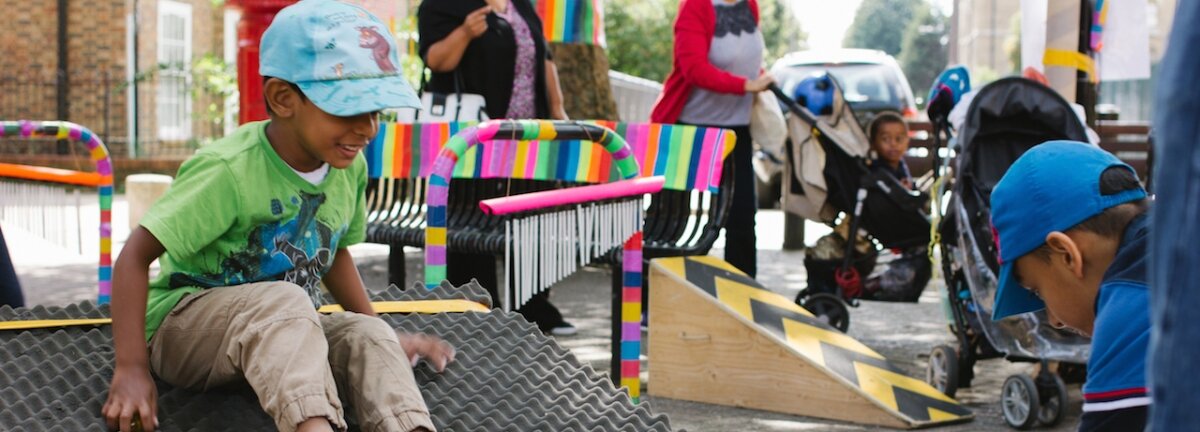When the park runs itself: creating a legacy for a Pop up Park

Last year we announced the three funded teams for our Knee High Design Challenge aiming to improve the health and wellbeing of children under five in Lambeth and Southwark. Here Tom Doust, finalist and founder of Pop up Parks, looks at the potential impact of his project.
We are often asked what the lasting legacy of a Pop up Park is. It is not a short answer. There are lots of ways in which we believe a Pop up Park can work beyond being just a one day event or a series of events.
As we roll out a full pilot of our programme in Lambeth and Southwark, we are thinking about how each of our 20 projects will see a pop-up transition into legacy work. This could mean a permanent transformation to the built environment, fostering greater opportunities for outdoor play.
While access to outdoor play facilities and designated spaces is key, bringing people into those spaces is equally as important.
Tom Doust, founder of Pop up Parks
But there is a missing piece. While access to outdoor play facilities and designated spaces is key, bringing people into those spaces is equally as important. Here the notion of ‘build it and they will come’ applies not only to infrastructure but also to human contact.
We were thrilled to be part of London’s first Open Streets event on the last weekend in May. A large section of Great Suffolk Street in Southwark was closed for pedestrians and cyclists to participate safely in a range of activities, including a Pop up Park that occupied the space normally used by taxis, delivery vans and cars.
This bustling event attracted hundreds of families from the local community out onto the streets, many with children under five. It was possibly the busiest park space we have run and yet for much of it we stood back and watched as parents/carers and their children created obstacle courses using our colourful polystyrene blocks, chalked the pavements (and roads) with patterns and messages, contributed to a plant installation and danced around on our colourful street tiles.
It was a Pop up Park reaching a critical mass that created an environment ‘for children, run by children’. Their carers were keen to get involved and help facilitate their child’s experience. It was a momentous moment.
As we journey along our pilot year we are lucky to have evaluation partners NEF and Narativ working alongside us to measure outcomes and test our Theory of Change. In addition we are seeking more moments like that which Great Suffolk Street produced: where the park runs itself and we are merely an audience.
Pop up Parks' impact will be measured on health outcomes but also on the lasting impact local people can bring to the public realm: the streets, pathways, right of ways and publicly accessible open spaces that people collectively own and which people can celebrate through play.
Visit popupparks.org.uk
Follow @PopUpParks on Twitter
Subscribe to our newsletter
Want to keep up with the latest from the Design Council?
